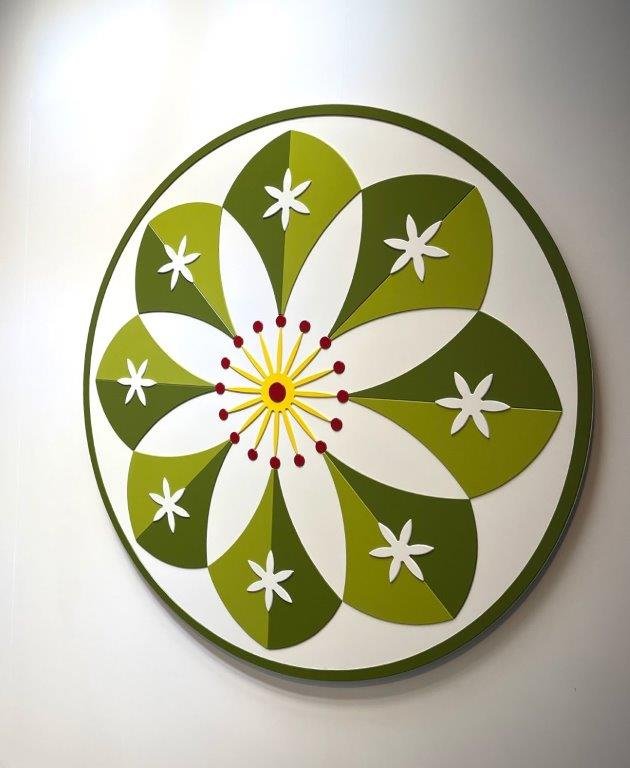Tim Main
Tim Main is a sculptor currently based in Christchurch working primarily in wood and ceramic. His Barn Stars are stunning large circles made out of aluminium, and epoxy paint, around 1.5metres in diameter.
The broad theme around his works is based on observing order and purpose in nature and finding ways to visually express that. He works with the belief that art is a craft-based tool for the study of consciousness. Tim feels that the pleasure of the aesthetic experience lies in a harmony of order and movement. The artist observes the medley of forms in a subject and takes from that a few expressive elements that will function as a stylistic motif. When this is taken into a pattern the result can function as a symbol for all nature. There is a yearning for perpetuity embodied in pattern, and a desire to understand nature’s sublime secret of creation. He has made circular constructions (rosettes) regularly as part of my sculptural practice for the past 20 years. The rosette for me is totality, wholeness, the unmanifest, the infinite, the cosmos, timelessness - having no beginning and no end. It is an endless movement. The Influences/Starting Points for the Barn Stars Broadly, the barn stars take native NZ flowers and visualise them as celestial bodies. The rata star may be thought of as representing our sun.
Tim also has been drawn to European folk art lately for its straightforward worship of nature integrated into daily life and ritual. The symbolical visual language of that tradition has influenced this body of work. From: ‘Hex Signs: Sacred & Celestial Symbolism in Pennsylvania Dutch Barn Stars’, By Patrick J. Donmoyer. Nestled in the rolling hills and valleys of southeastern Pennsylvania, a cultural treasure lies hidden in plain sight. Vibrant murals of stars, sunbursts, and moons painted in vivid colours punctuate the exteriors of the generously proportioned barns of the Pennsylvania Dutch country in a manner that is unique among American artistic traditions.
Complex, geometric, yet deceptively simple, these abstract representations of heavenly bodies once saturated the rural landscape, and now serve as cultural beacons of the robust and persistent presence of the Pennsylvania Dutch, who once settled and still maintain a strong presence in the region.
The residents of these quiet rural communities regard the stars as something to be cherished, yet perfectly ordinary — an agricultural expression of folk art, and as commonplace as eating pie. Nevertheless, for the outside world, the barn stars, also commonly called hex signs, have captured the American imagination as generations of visitors to the region marvel at the seamless integration of art into the agrarian countryside.
These works are built to withstand permanent installation outdoors.






